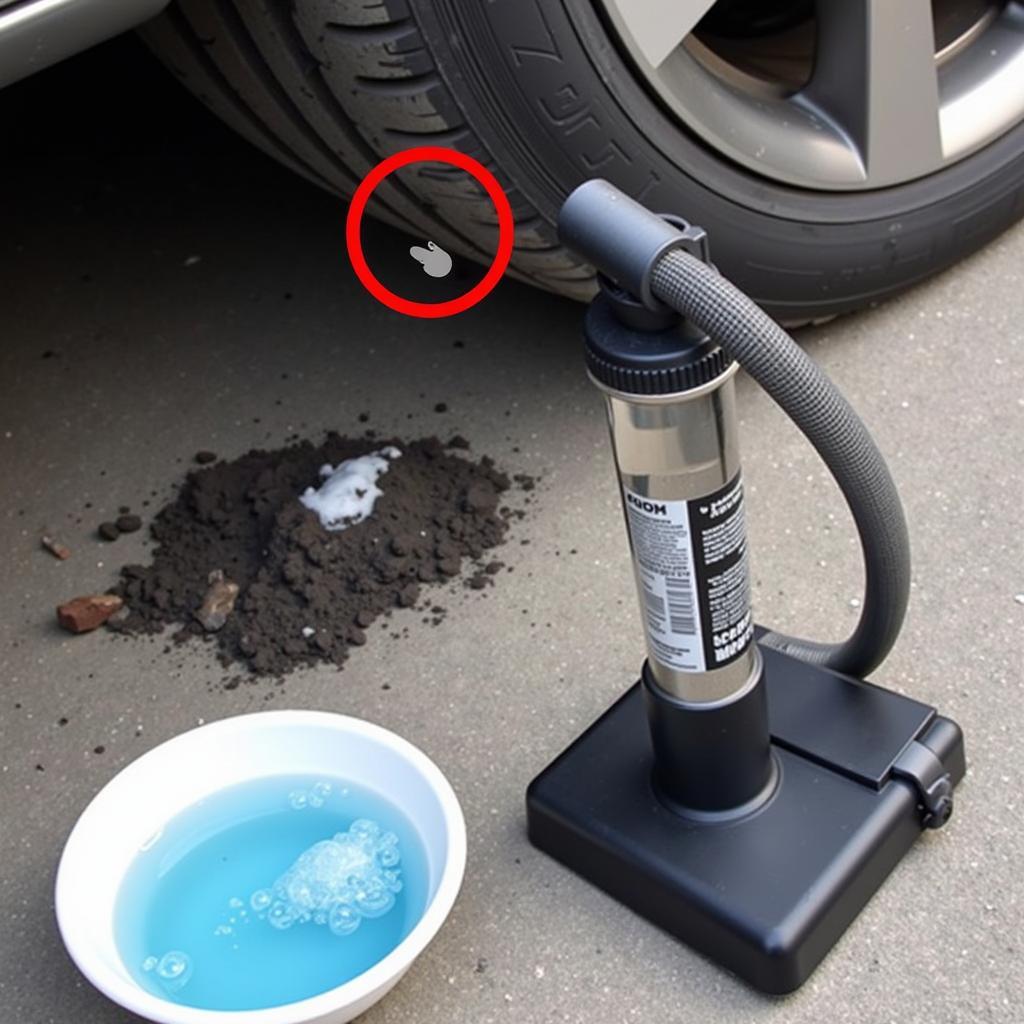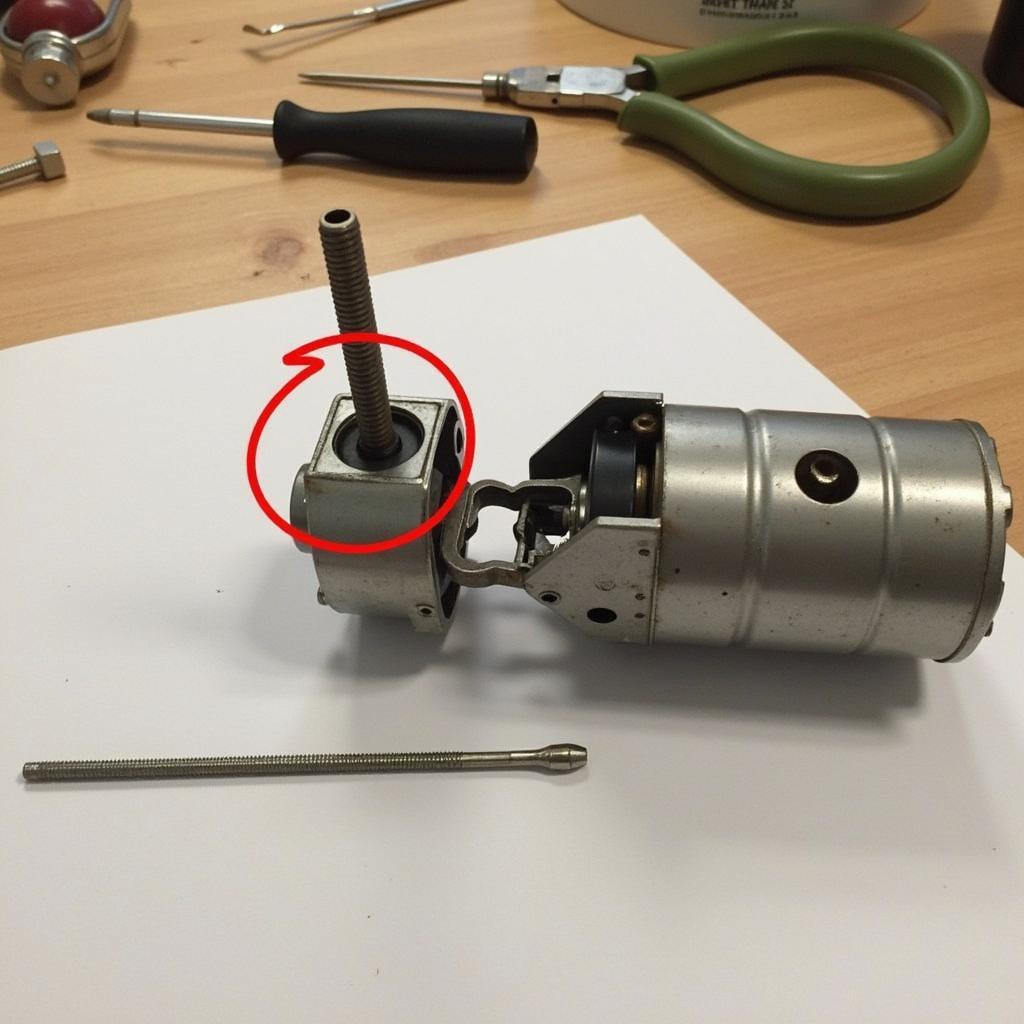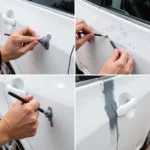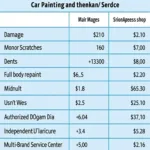A flat tire can ruin your day, and while a portable electric pump is convenient, knowing how to repair your car foot pump can be a lifesaver in emergencies. This guide provides a comprehensive overview of diagnosing and fixing common foot pump issues, empowering you to handle these situations confidently and get back on the road quickly. We’ll cover everything from identifying the problem to implementing the solution, ensuring you’re well-equipped to tackle any foot pump malfunction.
Common Car Foot Pump Problems
Foot pumps, while simple, can suffer from a few key issues. The most common are air leaks, damaged hoses, and a broken foot pedal mechanism. Identifying the culprit is the first step to a successful repair.
- Air Leaks: Leaks can occur at the hose connection, the pump body itself, or even the check valve. A hissing sound is a tell-tale sign of an air leak.
- Hose Damage: A cracked, punctured, or detached hose renders the pump useless. Inspect the hose carefully for any visible damage.
- Broken Foot Pedal Mechanism: This often involves a broken or bent rod connecting the pedal to the pump mechanism, making it difficult or impossible to pump air.
 Car Foot Pump Air Leak Diagnosis
Car Foot Pump Air Leak Diagnosis
Diagnosing the Issue
Start by checking the hose for obvious damage. If the hose seems intact, move on to checking for air leaks. A simple trick is to mix soapy water and apply it to the pump body and hose connections. If bubbles form, you’ve found your leak. If neither the hose nor the pump body shows signs of damage, the issue likely lies within the foot pedal mechanism.
 Car Foot Pump Hose Damage Inspection
Car Foot Pump Hose Damage Inspection
Repairing Your Car Foot Pump
Depending on the problem, the repair can be straightforward. Let’s look at fixing each of the common issues:
Fixing Air Leaks
- Hose Connection: Tighten the connection or replace the hose clamp if necessary. If the hose itself is damaged at the connection, replace the entire hose.
- Pump Body Leak: A small leak in the pump body can sometimes be sealed with epoxy. However, for larger cracks, replacement is usually the best option.
- Check Valve: This internal component can sometimes be replaced, but it often requires disassembling the pump.
Repairing Hose Damage
- Small Puncture: A temporary fix can be achieved using strong tape wrapped tightly around the punctured area. However, replacing the hose is recommended for a long-term solution.
- Larger Tears or Detachment: Replace the entire hose. Ensure the new hose is the correct size and securely attached.
Fixing the Foot Pedal Mechanism
This often requires taking apart the pump. If a connecting rod is broken or bent, it may need to be straightened or replaced. Consult the pump’s manual or seek professional help if you’re not comfortable with this level of disassembly.
How Long Does it Take to Repair a Car Foot Pump?
Repair times vary based on the problem. Fixing a loose hose connection can take just a few minutes. More complex repairs, such as replacing the foot pedal mechanism, could take an hour or more.
 Car Foot Pump Pedal Mechanism Repair
Car Foot Pump Pedal Mechanism Repair
Conclusion
Knowing how to repair a car foot pump is a valuable skill. With this guide, you can confidently diagnose and fix common problems, saving yourself time and money. While some repairs may require professional assistance, many can be easily handled with basic tools and a little know-how. Regular maintenance and inspection can also prevent many of these issues, ensuring your foot pump is always ready when you need it.
FAQ
- Where can I buy a replacement hose for my foot pump? Auto parts stores and online retailers typically carry replacement hoses.
- Are all car foot pumps the same? No, they come in various sizes and designs. Check your car’s manual or the pump itself for specifications.
- Can I use a bicycle pump for my car tires? Yes, but it will take considerably more effort and time due to the larger volume of car tires.
- How often should I check my foot pump? It’s a good idea to inspect it whenever you check your spare tire.
- What should I do if I can’t repair the foot pump myself? Take it to a mechanic or a tire shop for professional assistance.
- Can I use an air compressor instead of a foot pump? Yes, an air compressor is a faster and more efficient alternative.
- How do I know if my foot pump’s check valve is faulty? If the pump doesn’t hold pressure or air escapes back through the hose, the check valve might be the problem.
Other Potential Problems and Solutions
Sometimes the problem isn’t with the pump itself but with how you’re using it. Make sure you’re properly attaching the hose to the tire valve and that the connection is airtight. Also, check the tire valve itself for any damage. If you suspect you have a how to repair lose clutch in car, check our dedicated article on that topic.
Further Reading
For other helpful car maintenance tips, check out our articles on related topics. You might find our guide on how to change a flat tire or maintaining proper tire pressure helpful.
We are here to help! If you need further assistance, please don’t hesitate to contact us via WhatsApp: +1(641)206-8880, or Email: [email protected]. Our customer service team is available 24/7.


